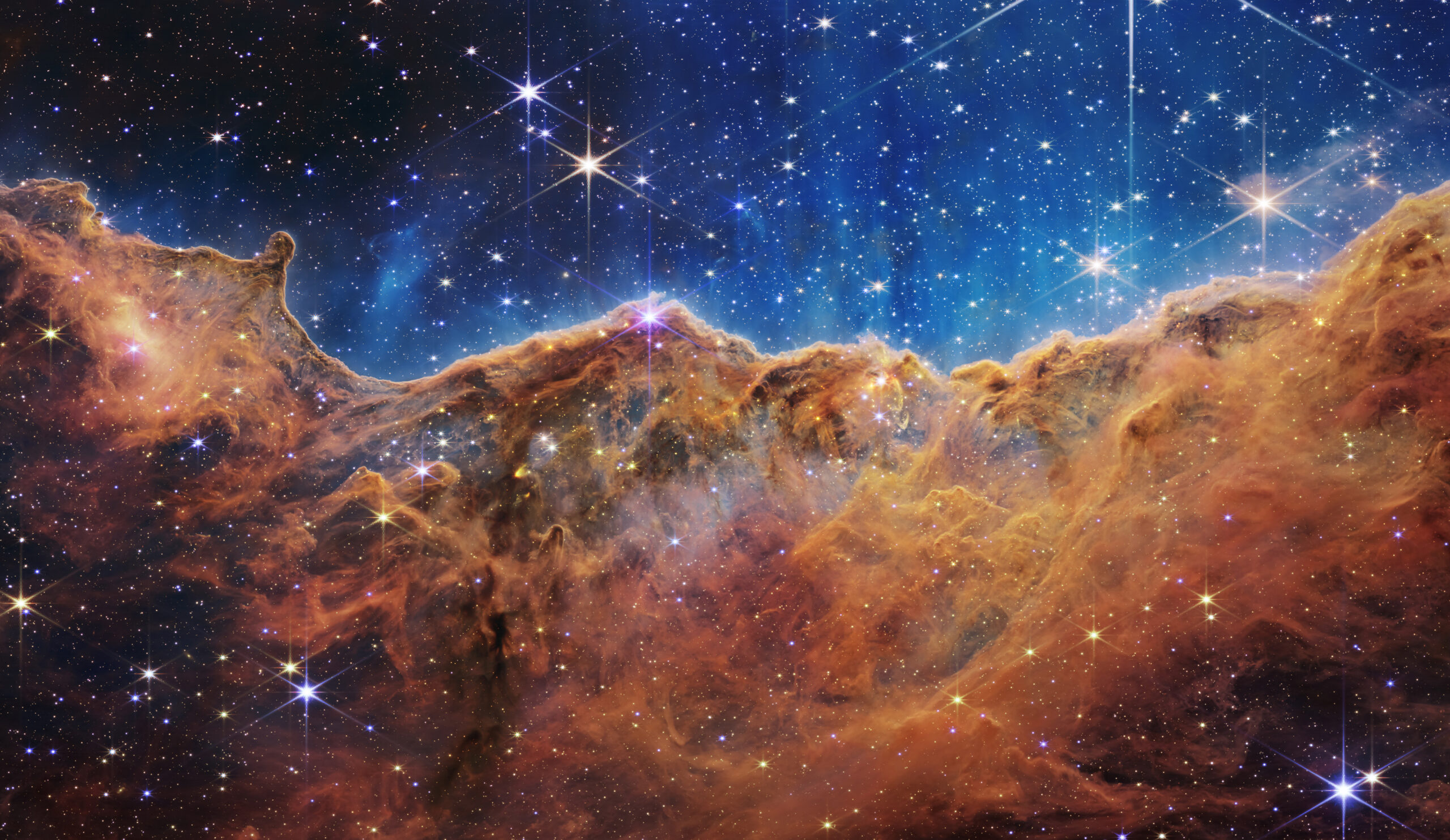NASA has released some of the deepest and highest-resolution images of the universe to date.
The images have been captured by the James Webb Space Telescope, which launched late last year. View all the high-resolution images from the JWST here.
The SMC asked experts to comment.
Dr Michele Bannister, Senior Lecturer and planetary astronomer, University of Canterbury, comments:
“These images and spectra give us exquisite new detail on events at scales both small and vast.
“There’s insight into how supermassive black holes are eating material at the hearts of incredibly distant galaxies. There’s beautiful arcs of light, as the vast mass of clusters of galaxies bend and bow the light from even more distant galaxies.
“Another image shows the delicate traceries of dust around places where new stars are being born, and the disks holding developing planets. And the spectra of the atmosphere of a distant planet has haze and clouds when it seemed it was going to be quite clear, based on what earlier telescopes had been able to tell from the ground.
“These are fabulous data — I can’t wait to see what this telescope will be able to do next!”
Note: Dr Bannister is a co-investigator on an outer Solar System program with the James Webb Telescope.
No conflict of interest declared.
Associate Professor Jan J. Eldridge, Head of the Department of Physics, University of Auckland, comments:
“JWST now needs to be called the ‘Just Wow Space Telescope’. These new images are of views we’ve seen before but with the clarity and detail we now see, it feels like a masterpiece has been restored to our full view.
“Zooming in on these images, many new details can be seen. There are multiple faint arcs of gravitationally lenses galaxies, many small bright dots, each of which is a galaxy! The detail and information that we now have is astounding. The truly spectacular advance, however, is the spectra that have been obtained.
“The first one released here is an accurate observation of water in the atmosphere of a hot Jupiter, exoplanet WASP-96b, a planet orbiting another star. While it’s not habitable, it shows that it is going to be much easier to study nearby exoplanets in our own Galaxy.
“The more remarkable one for me is the second spectra released, of one of the tiny dots in the deep-field image. This is a spectrum of a galaxy at a redshift of 8.5, this is 13.1 billion years ago, when the universe was only 600 million years old! In it we see multiple emission lines of oxygen, neon and hydrogen. The fact they are so clear and so bright is going to transform our understanding of how galaxies, and the composition of elements, evolve through cosmic history. We also know the stars in these galaxies evolve differently to those in our own Galaxy, so it’s going to be a lot of new things we’re going to learn.”
Note: “I am involved in a project that is using JWST data to study dusty stars in our Galaxy. And interested in the high-redshift results as the models of stellar populations we make are the ones widely used to understand those galaxies.”
No conflict of interest declared.
Professor Richard Easther, Department of Physics, University of Auckland, comments:
“It’s a stunning day for science. We know that the Universe began with a Big Bang, but the real challenge is filling in the story of how it changed from then until now. Everything we can touch and see — from atoms to planets to stars and galaxies — must be made by the Universe between the Big Bang and the present day.
“The JWST is showing us the first galaxies to form after the Big Bang, and lets us count the kinds of atoms made in the first generations of stars to live in the Universe.
“Other images in that first batch show us the births and death of stars in our own neighbourhood and let us figure out the appearance of the skies of a distant planet.
“Science can only really make progress when we can test our ideas well enough to know when we are wrong, and the insights from the JWST are going to drive progress in astronomy for years to come.”
No conflict of interest declared.
Associate Professor Karen Pollard, Director of The University of Canterbury Mt John Observatory, comments:
“We have studied the young, massive and unstable binary star eta Carina, which resides within the Carina nebula, for many years now, using the HERCULES spectroscopy at the University of Canterbury Mt John Observatory in Tekapo. We have determined the orbital properties of the binary system and observed the power of the interaction of highly-energetic stellar winds that both stars emit.
“Now NASA’s James Webb Space Telescope has used its infrared cameras to reveal incredible detail in the structures of the gas and dust in this active star formation region which were previously hidden. These images will allow astronomers to chronicle the process of star and planetary formation in precise detail, and study the interaction of young newly-born stars, such as eta Carina and its lower-mass siblings, with their surrounding environment of gigantic gas and dust clouds.
“The complexity and the incredible detail seen in the gas and gas structures in these images show the power of the JWST with its infrared instruments. These amazing images reveal young stars with their outflowing jets and planet-forming dusty disks, and the way in which the gas and dust clouds have been sculpted by the energetic winds from the nearby young stars.”
Note: the Carina Nebula is pictured above.
No conflict of interest declared.
